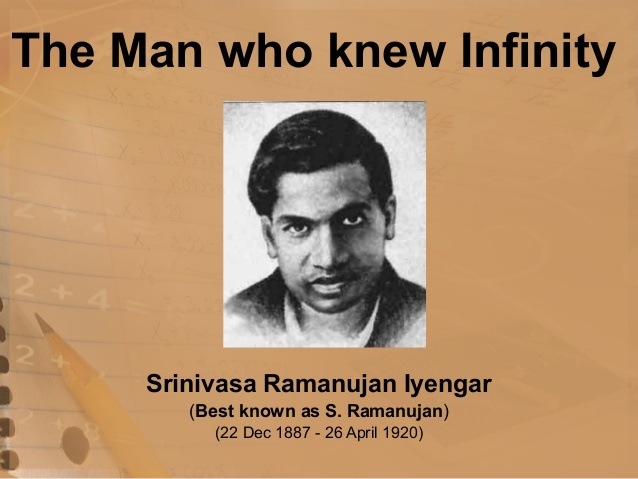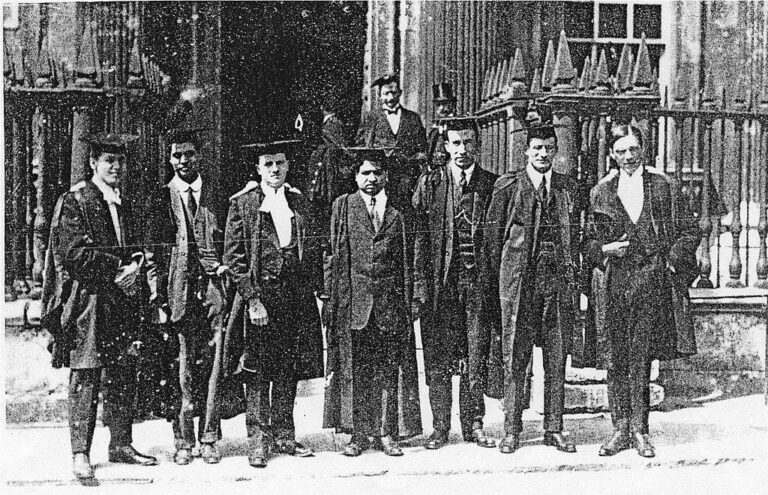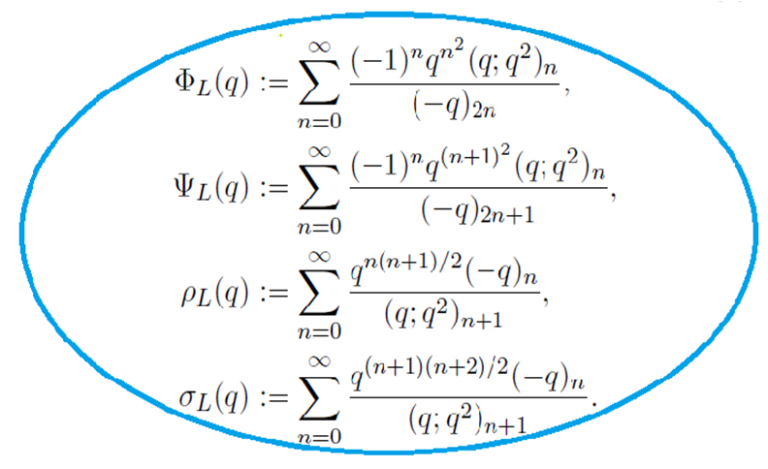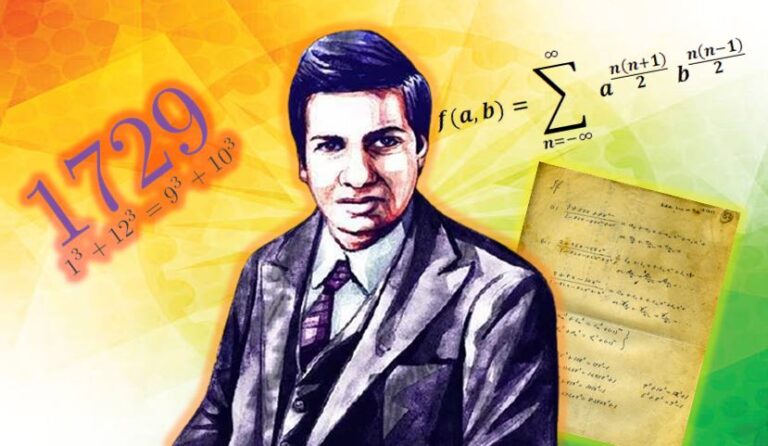Srinivasa Ramanujan was one of the finest mathematicians of all time, although many of his discoveries were overlooked during his lifetime. He first received credit in the twenty-first century.
About Ramanujan
Srinivasa Ramanujan, an Indian mathematician, was born in Madras, India on December 22, 1887. He, like Sophie Germain, had no formal education in mathematics but made significant contributions to its growth. G.H. Hardy, a friend of his, summed up his accomplishment in the following words:
Mathematical Contribution
His primary contributions to mathematics are in analysis, game theory, and infinite series. He conducted extensive research in order to tackle numerous mathematical difficulties by bringing to light fresh and creative concepts that aided the advancement of game theory. Because of his mathematical prowess, he discovered his own theorems. He devised infinite series for because of his sharp perception and natural brilliance.
This series served as the foundation for several algorithms that are still in use today. One such example is when he solved his roommate’s bivariate problem on the fly of the moment with a unique solution that addressed the whole class of problems using continuous fraction. He also led to the discovery of previously undisclosed identities, such as by correlating coefficients of and establishing identities for hyperbolic secant.
Ramanujan’s Career
Ramanujan forwarded his work to prominent mathematician G. H. Hardy in 1913. Hardy was blown away by Ramanujan’s work and intended to bring him to Cambridge. Meanwhile, as a consequence of all the international endorsements, Ramanujan was awarded a research fellowship at the University of Madras by the Board of Studies in Mathematics.
Ramanujan arrived in England in March 1914 and spent over 5 years at Cambridge working with Hardy and Littlewood. In 1916, he received a Bachelor of Science degree via research. In 1917, he was elected a member of the London Mathematical Society.. In 1918, he was elected to the Royal Society and Trinity College, Cambridge.
Ramanujan’s Contributions to Mathematics
Ramanujan made several contributions to mathematics over his 32-year career. He independently gathered approximately 3,900 findings, virtually all of which were verified true.
He developed:
- Magic Square
- Brocard – Ramanujan Diophatine equation
- Dougall – Ramanujan identity
- Hardy – Ramanujan number
- Landau-Ramanujan constant
- Ramanujan’s congruences
- Ramanujan – Nagell equation
- Ramanujan graph
- Ramanujan’s tau function
- Ramanujan’s ternary quadratic form
- Mock theta functions
- Ramanujan conjecture
- Ramanujan prime
- Ramanujan-Soldner constant
- Ramanujan theta function
- Ramanujan’s sum
- Rogers-Ramanujan identities
- Ramanujan’s master theorem
“The Man Who Know Infinity”
All of his discoveries have sparked a massive amount of additional investigation. The Ramanujan Journal, an international magazine, was established to publish material influenced by his work in many fields of mathematics.
How did S. Ramanujan define pi()?
This is how Ramanujan explained Pi.
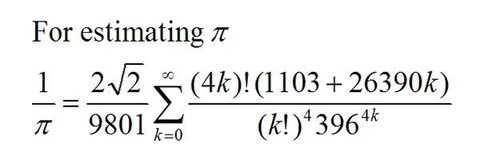
Top 10 Facts About the Guy Who Knew Infinite
1. He was born in Erode, Tamil Nadu, in 1887.
His father worked as a clerk for a textile trader, while his mother was a housewife who also sang at a nearby temple.
2. His family’s home in Kumbakonam, where he was born, is today preserved as the Srinivasa Ramanujan International Monument.
3. In 1909, he married Janaki Ammal, who was 9 years old at the time.
4. Although he is regarded as one of the finest mathematicians of all time, Srinivasa Ramanujan received very no formal math education.
Many of his mathematical discoveries were based only on intuition, yet the vast majority of them were ultimately proven to be correct.
5. He was the second Indian to be elected as a Fellow of the Royal Society, an organisation comprised of some of the world’s most distinguished scientists.
He joined the fellowship in 1918, at the age of 31, as one of the society’s youngest fellows.
6. Ramanujan, a devotee of his family deity Mahalakshmi, attributed his powers to her.
“An equation has no meaning for me unless it expresses a concept of God,” he once said.
7. He accumulated 3,900 findings (mainly identities and equations) before dying at the age of 32. One of his most famous discoveries was the infinite series for pi.
8.A museum that tells Ramanujan’s life narrative is also there. It is located in Chennai and has various pictures of his home and family in addition to comments to and from friends, family, and other people.
Late P.K. Srinivasan, a renowned math instructor, worked on the collection for decades. He spent years searching for images, letters, and other items that may be utilised in the museum. He discovered a large amount of stuff in Ramanujan’s old attic around 1993.
9. Every year on December 22, his birth anniversary is observed as National Mathematics Day.
10. According to stories, Ramanujan liked to scribble his thoughts in green ink in notebooks.
One of the notebooks, dubbed the “lost notebook,” was discovered in the Trinity College library in 1976 by mathematician George Andrews and eventually published as a book.
How Srinivasa Ramanujan Died?
Ramanujan remained sickly throughout his adult life.
He suffered two bouts of dysentery before leaving India. Dysentery can lay latent for years if not treated appropriately, leading to hepatic amoebiasis, a diagnosis that was not well established at the time.
Amoebiasis was a manageable and frequently curable illness at the time if correctly identified.
Living in England for nearly five years during a war proved to be a misfortune for Ramanujan.
He did not eat meat because he came from a bramhin household. Wartime rationing made it difficult to get vegetables, legumes, and fruits.
Because of these factors, he did not eat much, resulting in several nutritional deficiencies.
Yes, he was diagnosed with tuberculosis, which was subsequently revealed, but he had been severely unwell for a short time before that.
When he felt a bit better, he wanted to fly to India, but I believe the voyage back was too difficult for him and aggravated his illness. In 1919, he returned to Kumbakonam, Madras, and died in 1920, at the age of 32.
Who knows, if he had stayed in England, he could have been the greatest mathematician who ever lived.
However, even while unwell, he would not stop working and persisted till his death; there is even a book on this subject that was discovered years later called “Ramanujan’s Lost Notebooks.”
